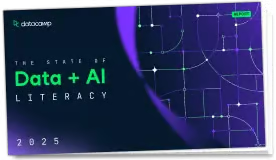
This function implements a fundamental part of RST: a decision-relative discernibility matrix. This notion
was proposed by (Skowron and Rauszer, 1992) as a middle-step in many RST algorithms for computaion of reducts,
discretization and rule induction. A more detailed explanation of this notion can be found
in Introduction-RoughSets.
BC.discernibility.mat.RST(
decision.table,
range.object = NULL,
return.matrix = FALSE,
attach.data = FALSE
)An object of a class DiscernibilityMatrix which has the following components:
disc.mat: the decision-relative discernibility matrix which for pairs of objects from different
decision classes stores names of attributes which can be used to discern between them. Only pairs of
objects from different decision classes are considered. For other pairs the disc.mat contains
NA values. Moreover, since the classical discernibility matrix is symmetric only the pairs
from the lower triangular part are considered.
disc.list: a list containing unique clauses from the CNF representation of the discernibility
function,
dec.table: an object of a class DecisionTable, which was used to compute the
discernibility matrix,
discernibility.type: a type of discernibility relation used in the computations,
type.model: a character vector identifying the type of model which was used.
In this case, it is "RST" which means the rough set theory.
an object inheriting from the DecisionTable class, which represents a decision system.
See SF.asDecisionTable.
an integer vector indicating objects for construction of the NULL which means that all objects in the decision table are used.
a logical value determining whether the discernibility matrix should be retunred in the output. If it is set to FALSE (the default) only a list containing unique clauses from the CNF representation of the discernibility function is returned.
a logical indicating whether the original decision table should be attached as
an additional element of the resulting list named as dec.table.
Lala Septem Riza and Andrzej Janusz
A. Skowron and C. Rauszer, "The Discernibility Matrices and Functions in Information Systems", in: R. Słowinski (Ed.), Intelligent Decision Support: Handbook of Applications and Advances of Rough Sets Theory, Kluwer Academic Publishers, Dordrecht, Netherland, p. 331 - 362 (1992).
BC.IND.relation.RST, BC.LU.approximation.RST, BC.LU.approximation.FRST
and BC.discernibility.mat.FRST
#######################################################################
## Example 1: Constructing the decision-relative discernibility matrix
#######################################################################
data(RoughSetData)
hiring.data <- RoughSetData$hiring.dt
## building the decision-relation discernibility matrix
disc.matrix <- BC.discernibility.mat.RST(hiring.data, return.matrix = TRUE)
disc.matrix
Run the code above in your browser using DataLab